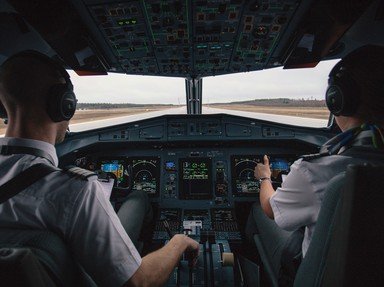Quiz Answer Key and Fun Facts
1. The earliest regular aviation routes were flown as a means of delivering mail. Who pioneered the first air-mail service in the USA in 1911?
2. In 1918, the first regular air-mail route in the USA commenced, with pilots under the command of Major Reuben Fleet. What was this inaugural regular route?
3. Many different types of aircraft were used by the Post Office Department as they developed reliable air mail routes throughout continental USA. In 1921 it adopted an aircraft with a more reliable engine than before as its standard mail carrier. What was this aircraft?
4. Early freighter aircraft were starting to be developed during the 1920s. In England, a development of an existing commercial aircraft was put into service as a dedicated troop carrier in 1921. What aircraft was this?
5. It is fair to say that most forms of aviation would not have advanced so quickly without pressure of warfare. Which aircraft started life as the DST, and quickly popularised air travel in America?
6. Which aircraft, designed by the subject of the movie "The Aviator" and now on display at Evergreen Aviation and Space Museum in Oregon, was designed to be a transatlantic flying boat transport vehicle for use in WWII, but only achieved one inaugural test flight in 1947?
7. In the late 1960s a consortium was formed to develop a large-capacity European airliner. This was to be built jointly by France, Britain, Germany, Spain and the Netherlands. What was the designation of this aircraft?
8. The history of air transport would be incomplete without mention of the Boeing 707, the company's first jet airliner. Although no longer in regular service, a number of the aircraft have been preserved. One of these was the ex-Qantas VH-EBM "City of Launceston", which in 2017 was donated to Australia's Historical Aircraft Restoration Society by its famous owner. Who was this generous benefactor?
9. A 'strategic airlifter', the C-5 Galaxy, started its flight-testing in the USA state of Georgia in 1968. Which manufacturer developed and built this large aircraft?
10. This Russian aircraft has the NATO designation "Cossack", and is powered by six turbofan engines. Designed during the 1980s, it was the heaviest aircraft ever built. As at 2018 there was only one aircraft of this type ever built. What Goliath of the skies was this?
Source: Author
windrush
This quiz was reviewed by FunTrivia editor
stedman before going online.
Any errors found in FunTrivia content are routinely corrected through our feedback system.
